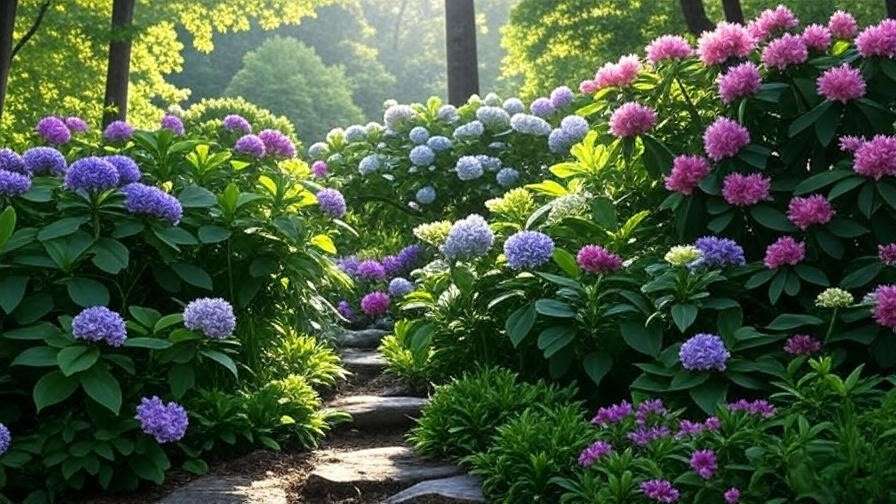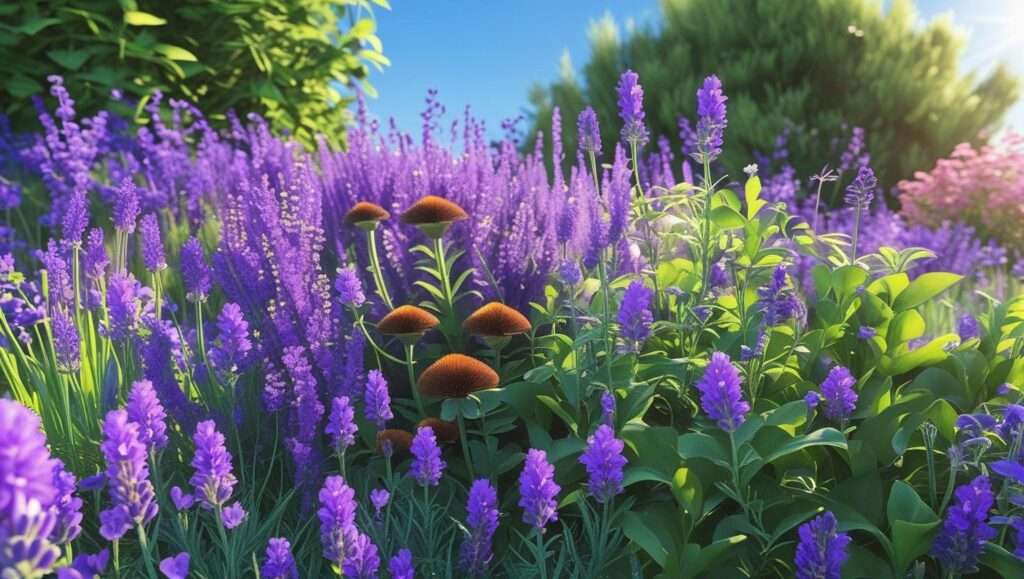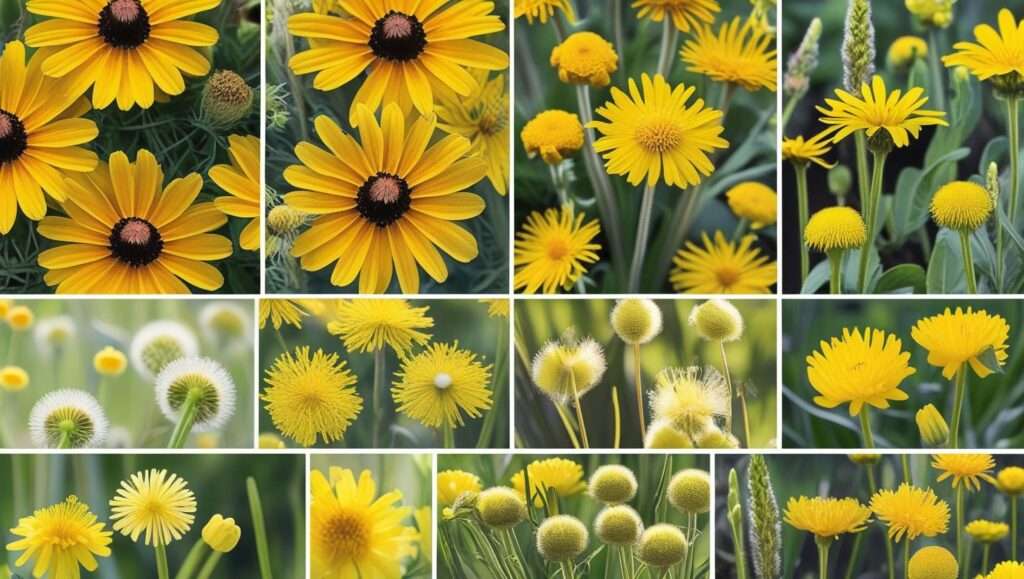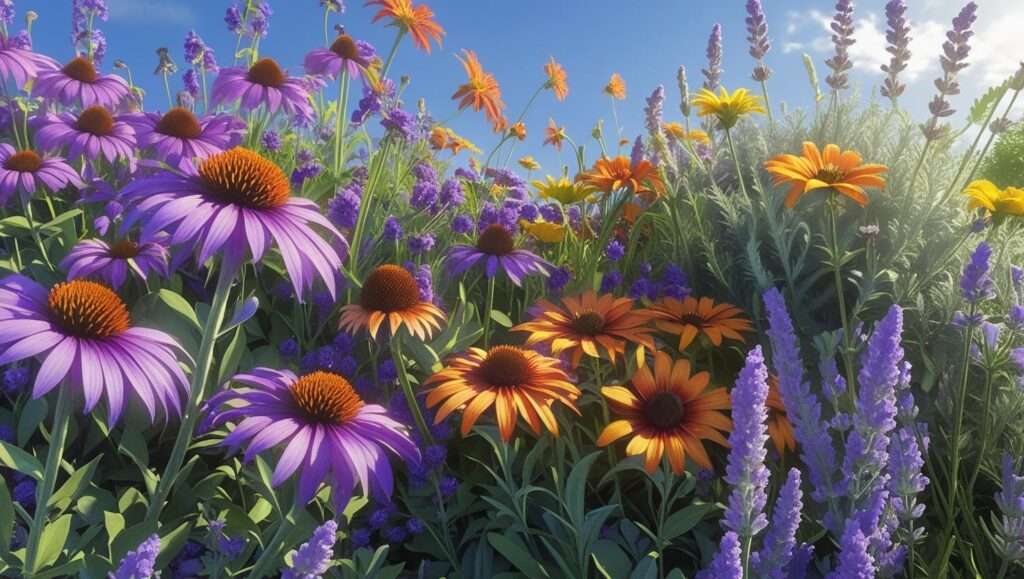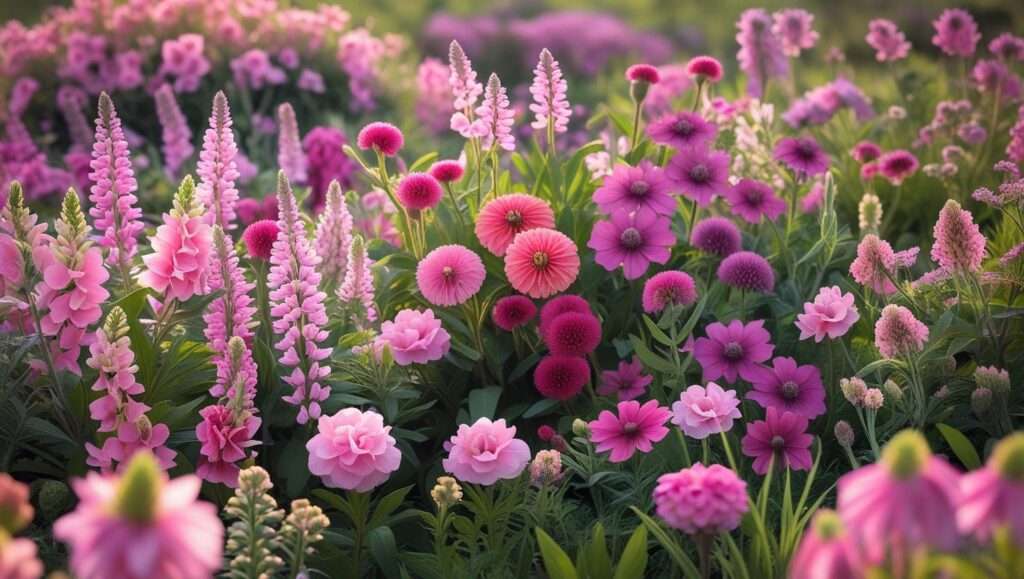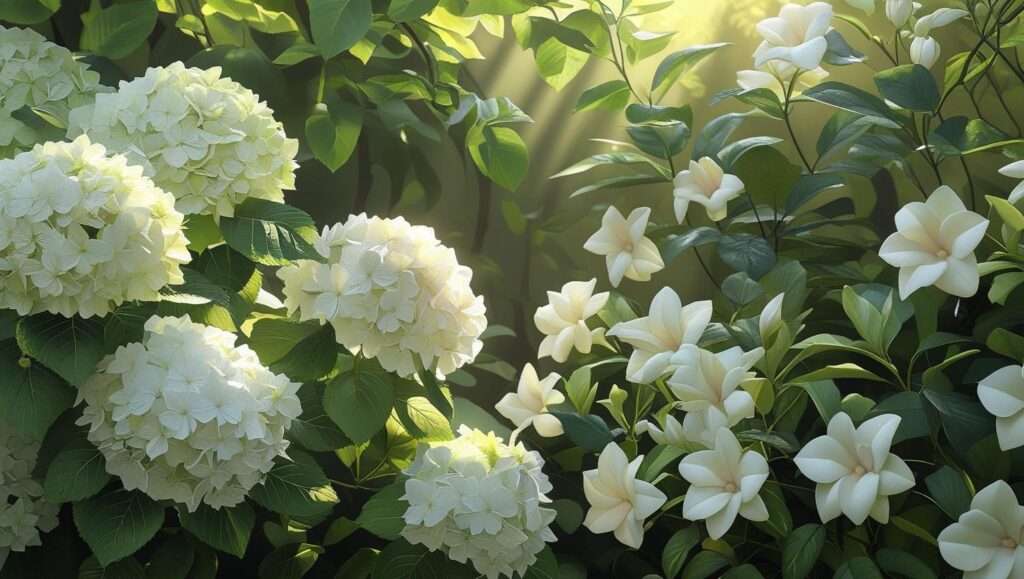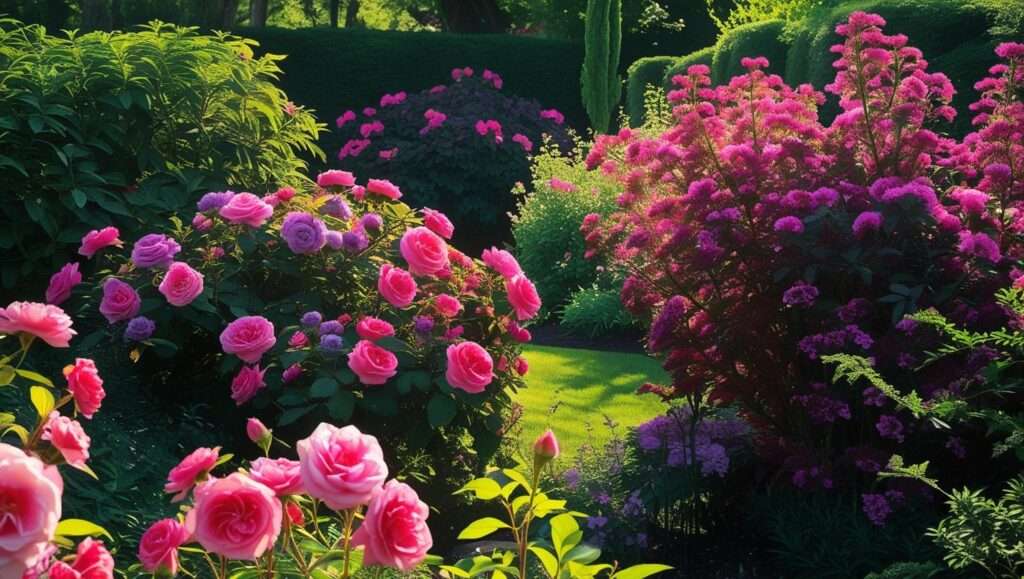Imagine a shaded corner of your garden bursting with vibrant blooms, defying the dim light with splashes of color and life. For many gardeners, shady spots under trees or beside buildings feel like a challenge, often resulting in dull, lifeless patches. But with the right shrubs that flower in shade, you can transform these areas into stunning displays of beauty and texture. This article unveils the top 10 shade-tolerant shrubs that not only thrive in low-light conditions but also deliver spectacular flowers to elevate your garden’s appeal. Drawing on decades of horticultural expertise and insights from landscape professionals, we’ll guide you through selecting, planting, and caring for these shrubs to create a flourishing, low-maintenance garden.
Why Choose Shrubs for Shady Gardens?

Benefits of Shade-Tolerant Shrubs
Shrubs are the backbone of any well-designed garden, and shade-tolerant varieties are no exception. These plants offer structure, year-round interest, and vibrant blooms, even in areas where sunlight is scarce. Unlike annuals, shrubs provide long-term beauty with minimal upkeep, making them ideal for busy gardeners. Their ability to flower in low light adds color where other plants struggle, turning shaded areas into focal points. Additionally, many shade-loving shrubs attract pollinators like bees and butterflies, enhancing your garden’s ecological value.
Understanding Shade Types in Gardens
Not all shade is equal. Understanding your garden’s shade type is crucial for selecting the right shrubs. Light shade occurs in areas with filtered sunlight, such as under high tree canopies. Partial shade receives 3–6 hours of direct sunlight daily, often in morning or late afternoon. Full shade gets less than 3 hours of sunlight, typically found near north-facing walls or under dense trees. To assess your garden’s shade, observe sunlight patterns over a day or use a light meter. This ensures you choose shrubs suited to your specific conditions.
Expert Insight: “Shrubs are a game-changer for shaded gardens,” says Dr. Emily Carter, a horticulturist with 20 years of experience. “Their resilience and ability to bloom in low light make them indispensable for creating lush, inviting spaces.”
Key Considerations for Selecting Shade-Loving Shrubs
Factors to Evaluate
Choosing the right shrubs involves more than picking pretty flowers. Consider these factors:
- Soil Type: Most shade-loving shrubs prefer well-drained, slightly acidic soil rich in organic matter. Test your soil’s pH and amend it with compost if needed.
- Moisture Levels: Shady areas often retain moisture, so ensure proper drainage to prevent root rot.
- Climate Zone: Check your USDA hardiness zone (available at USDA’s Plant Hardiness Zone Map) to select shrubs that thrive in your region.
- Bloom Time and Color: Choose shrubs with staggered bloom times for continuous color and select hues that complement your garden’s palette.
- Foliage: Evergreen shrubs provide year-round structure, while deciduous ones offer seasonal variety.
Common Mistakes to Avoid
Avoid these pitfalls when selecting shrubs:
- Choosing Sun-Loving Plants: Plants like roses or lavender will languish in shade.
- Ignoring Soil Drainage: Poor drainage can kill even the hardiest shrubs.
- Overlooking Maintenance Needs: Some shrubs require regular pruning to bloom consistently.
Tip: Create a checklist to evaluate your garden’s shade, soil pH, and drainage before shopping for shrubs. This ensures you pick plants that will thrive.
Top 10 Shrubs That Flower in Shade

1. Hydrangea (Hydrangea spp.)
Description: Hydrangeas are beloved for their large, showy blooms in shades of blue, pink, or white. Ideal for partial shade, they add drama to any garden.
Care Tips:
- Soil: Prefers moist, well-drained soil with a pH of 5.5–6.5. Add aluminum sulfate to enhance blue blooms.
- Watering: Keep soil consistently moist but not waterlogged.
- Pruning: Prune in late winter to remove dead wood and encourage new growth.
Design Idea: Plant hydrangeas as a focal point in shaded borders or under high tree canopies for a pop of color.
2. Rhododendron (Rhododendron spp.)
Description: These evergreen or deciduous shrubs produce vibrant spring blooms in red, pink, yellow, or white. They thrive in partial to full shade.
Care Tips:
- Soil: Requires acidic soil (pH 4.5–6.0). Add peat moss or pine needles to lower pH.
- Mulching: Apply a 2-inch layer of mulch to retain moisture and protect roots.
- Pests: Watch for lace bugs and treat with insecticidal soap if needed.
Example: Pair rhododendrons with ferns for a lush, woodland-inspired garden.
3. Azalea (Rhododendron subgenus)
Description: A subset of rhododendrons, azaleas are compact shrubs with colorful blooms in spring or early summer. They’re perfect for small shaded gardens.
Care Tips:
- Bloom Season: Fertilize after flowering with an acid-loving plant fertilizer.
- Pruning: Trim lightly after blooming to maintain shape.
- Watering: Ensure consistent moisture, especially during dry spells.
Expert Tip: Opt for reblooming azalea varieties like ‘Encore’ for flowers in spring and fall.
4. Camellia (Camellia japonica)
Description: Camellias offer elegant, rose-like blooms in winter to early spring, thriving in partial shade. Their glossy evergreen leaves add year-round beauty.
Care Tips:
- Protection: Shield from harsh winds with a windbreak or strategic planting.
- Soil: Prefers slightly acidic, well-drained soil.
- Watering: Water deeply but infrequently once established.
Design Idea: Use camellias in shaded patios or as a low hedge for a formal look.
5. Mountain Laurel (Kalmia latifolia)
Description: This native shrub boasts delicate, cup-shaped flowers in pink, white, or red. It thrives in partial to full shade and is ideal for naturalistic gardens.
Care Tips:
- Soil pH: Maintain a pH of 5.0–6.0 with organic amendments.
- Pruning: Remove spent flowers to encourage next year’s blooms.
- Watering: Moderate watering, ensuring good drainage.
Example: Plant mountain laurel in woodland gardens with native ferns and wildflowers.
6. Pieris (Pieris japonica)
Description: Known as “lily-of-the-valley shrub,” pieris features drooping clusters of white or pink flowers in early spring. Its evergreen foliage adds year-round appeal.
Care Tips:
- Watering: Keep soil moist but well-drained.
- Pests: Monitor for lace bugs and treat with neem oil.
- Light: Thrives in light to partial shade.
Design Idea: Combine pieris with hostas for a striking contrast of textures in shaded beds.
7. Viburnum (Viburnum spp.)
Description: Versatile viburnums offer fragrant white or pink flowers in spring, followed by berries that attract birds. They tolerate partial to full shade.
Care Tips:
- Pruning: Prune after flowering to maintain shape and encourage blooms.
- Soil: Adapts to various soil types but prefers moist, well-drained conditions.
- Light: Best in partial shade for optimal flowering.
Example: Use viburnum in mixed shrub borders for multi-season interest.
8. Sweetshrub (Calycanthus floridus)
Description: Sweetshrub’s unique reddish-brown flowers emit a fruity fragrance, making it a standout in partial shade gardens.
Care Tips:
- Maintenance: Low-maintenance and drought-tolerant once established.
- Soil: Tolerates a range of soils but prefers loamy, well-drained conditions.
- Pruning: Minimal pruning needed; shape in late winter if desired.
Expert Insight: “Sweetshrub is a pollinator magnet, drawing bees and butterflies,” notes botanist Dr. Laura Hayes.
9. Fothergilla (Fothergilla gardenii)
Description: This compact shrub offers white, bottlebrush-like flowers in spring and vibrant fall foliage. It thrives in partial shade.
Care Tips:
- Soil: Prefers acidic, well-drained soil.
- Pruning: Light pruning after flowering to maintain shape.
- Watering: Moderate watering, avoiding soggy conditions.
Design Idea: Use fothergilla in foundation plantings or shaded corners for seasonal color.
10. Oakleaf Hydrangea (Hydrangea quercifolia)
Description: A native shrub with bold, oak-like leaves and conical white blooms that turn pink with age. It excels in partial shade.
Care Tips:
- Watering: Keep soil moist, especially in the first year.
- Winter Protection: Mulch roots in colder climates (USDA zones 5–9).
- Pruning: Prune in late winter for shape and bloom production.
Example: Plant oakleaf hydrangea as a dramatic backdrop in shaded borders.
How to Plant and Care for Shade-Loving Shrubs

Step-by-Step Planting Guide
Planting shade-loving shrubs correctly sets the foundation for their long-term success. Follow these steps to ensure your shrubs thrive:
- Assess the Site: Confirm the shade level (light, partial, or full) and test soil pH and drainage. Most shrubs that flower in shade prefer slightly acidic, well-drained soil.
- Prepare the Soil: Amend with compost or organic matter to improve fertility and drainage. For acidic-soil lovers like rhododendrons, mix in peat moss or pine bark.
- Dig the Hole: Make it twice as wide and as deep as the root ball. Loosen the soil to encourage root growth.
- Plant the Shrub: Place the shrub in the hole, ensuring the top of the root ball is level with the soil surface. Backfill with soil, tamping gently to remove air pockets.
- Water Thoroughly: Soak the soil to settle roots, then mulch with a 2–3 inch layer of bark or wood chips to retain moisture and suppress weeds.
- Monitor Growth: Water regularly during the first year to establish roots, adjusting based on rainfall and soil conditions.
Ongoing Maintenance
Shade-loving shrubs are generally low-maintenance, but consistent care ensures vibrant blooms and healthy growth:
- Watering: Most shrubs need 1–2 inches of water per week, depending on soil type and climate. Use a soaker hose to deliver water directly to roots, avoiding foliage to prevent fungal issues.
- Fertilization: Apply a balanced, slow-release fertilizer (e.g., 10-10-10) in early spring. For acid-loving shrubs like azaleas, use a fertilizer formulated for acid-loving plants.
- Pruning: Prune after flowering to maintain shape and encourage next season’s blooms. For example, hydrangeas bloom on old wood, so avoid heavy pruning in fall.
- Mulching: Refresh mulch annually to maintain a 2–3 inch layer, keeping it away from the shrub’s base to prevent rot.
Troubleshooting Common Issues
Even hardy shrubs can face challenges. Here’s a quick guide to common problems and solutions:
| Issue | Cause | Solution |
|---|---|---|
| Yellowing leaves | Overwatering or poor drainage | Improve drainage; reduce watering frequency. |
| Few or no blooms | Insufficient light or improper pruning | Ensure adequate shade type; prune at the right time. |
| Pest infestations (e.g., lace bugs) | Environmental stress or lack of monitoring | Use neem oil or insecticidal soap; maintain plant health. |
| Fungal diseases | Excess moisture on foliage | Water at the base; improve air circulation with pruning. |
Tip: Regularly inspect your shrubs for early signs of stress, such as wilting or discolored leaves, to address issues before they escalate.
Designing a Shaded Garden with Flowering Shrubs

Creating a Cohesive Look
A shaded garden can be as vibrant as a sunny one with thoughtful design. Use these strategies to create a cohesive, inviting space:
- Layering: Combine shrubs with varying heights and textures. For example, plant tall oakleaf hydrangeas at the back, medium-height camellias in the middle, and low-growing fothergilla in front.
- Companion Plants: Pair shrubs with shade-loving perennials like hostas, ferns, or astilbes. These plants complement the shrubs’ foliage and add visual interest.
- Color Coordination: Choose shrubs with complementary bloom colors. For instance, mix the pink blooms of mountain laurel with the white flowers of pieris for a harmonious palette.
Seasonal Interest and Color
To keep your shaded garden vibrant year-round, plan for staggered bloom times and varied foliage:
- Spring: Azaleas, rhododendrons, and pieris provide early-season color.
- Summer: Hydrangeas and sweetshrub offer mid-season blooms.
- Fall: Fothergilla and oakleaf hydrangea shine with colorful foliage.
- Winter: Camellias and evergreen viburnums maintain structure and interest.
Example: Create a woodland garden by planting a mix of mountain laurel, ferns, and hostas under a tree canopy. Add a path of stepping stones for accessibility and charm.
Expert Tip: “Balance is key in shaded gardens,” says landscape designer Sarah Thompson. “Use shrubs with bold blooms as focal points and softer perennials to fill gaps, creating depth and harmony.”
Environmental Benefits of Shade-Loving Shrubs
Supporting Pollinators and Wildlife
Shade-tolerant shrubs play a vital role in supporting local ecosystems. Many, like viburnum and sweetshrub, attract pollinators such as bees and butterflies with their nectar-rich flowers. Their berries, like those of viburnum, provide food for birds in fall and winter. By planting native shrubs like mountain laurel or oakleaf hydrangea, you support local wildlife and promote biodiversity.
Soil and Ecosystem Health
Shrubs contribute to a healthy garden ecosystem beyond their aesthetic appeal:
- Erosion Control: Deep-rooted shrubs like hydrangeas stabilize soil on slopes or in shaded areas prone to runoff.
- Soil Enrichment: Fallen leaves from deciduous shrubs like fothergilla add organic matter, improving soil fertility over time.
- Carbon Sequestration: Shrubs absorb carbon dioxide, contributing to a healthier environment.
Expert Insight: A 2023 study by the National Wildlife Federation found that native shrubs in shaded gardens support up to 60% more pollinator species than non-native alternatives, highlighting their ecological value.
FAQs About Shrubs That Flower in Shade
Q1: What are the best shrubs for full shade?
A: Mountain laurel, pieris, and certain viburnum varieties thrive in full shade. Ensure proper soil drainage to maximize their health.
Q2: How do I know if my garden’s shade is suitable for these shrubs?
A: Observe sunlight patterns over a day. Full shade gets less than 3 hours of direct sun, partial shade gets 3–6 hours, and light shade has filtered sunlight. Match shrubs to your shade type.
Q3: Can shade-loving shrubs grow in containers?
A: Yes, compact shrubs like azaleas or fothergilla are ideal for containers. Use well-draining, acidic potting mix and place in a shaded spot.
Q4: How often should I water shade-tolerant shrubs?
A: Water 1–2 inches per week during the first year, adjusting for rainfall. Established shrubs need less frequent watering unless conditions are dry.
Q5: Are there shade shrubs that bloom year-round?
A: No shrubs bloom year-round in shade, but camellias offer winter blooms, while reblooming azaleas provide spring and fall flowers for extended interest.
Conclusion
Transforming a shaded garden into a vibrant, blooming oasis is entirely achievable with the right shrubs. The top 10 shrubs that flower in shade—hydrangeas, rhododendrons, azaleas, camellias, mountain laurel, pieris, viburnum, sweetshrub, fothergilla, and oakleaf hydrangea—offer a range of colors, textures, and bloom times to suit any garden. By selecting the right shrubs, planting them properly, and providing minimal care, you can create a stunning, low-maintenance landscape that thrives in low light. Start by assessing your garden’s shade and soil conditions, choose a shrub from this list, and watch your garden come to life. Share your experiences or ask questions in the comments below—we’d love to hear about your shaded garden journey!

